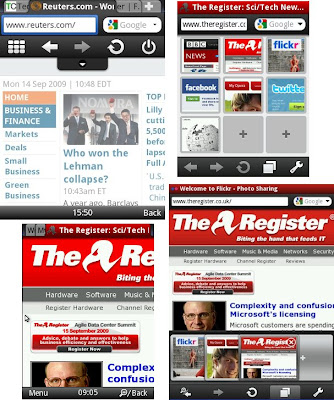
A non-profit group in the occupied West Bank has started a scheme that uses mobile phone text messaging to help young Palestinians find work.
The group, based in Ramallah, has already registered 8,000 Palestinians on its Souktel system, most of them recent graduates. The system connects them to about 150 leading employers who are looking for staff.
Internet access in the West Bank remains low, reaching about one-third of the population. Most computer use is at internet cafes, which are largely male-dominated domains in what is still a conservative society.
Souktel enables young people looking for work to register by answering a series of simple questions in Arabic through text messages, which are used to create a mini-CV. They then receive regular information about relevant jobs on offer.
It costs little to use apart from a slight premium charged on each text sent. In the same way, employers can post notices about job vacancies and filter applications.
The project comes at a time when despite forecasts of improved economic growth in the West Bank, unemployment still stands at around 20%, with that figure even higher among young people.
The Palestinians are a highly educated population but the Israeli occupation in the West Bank, with checkpoints, roadblocks and frequent restrictions, makes it costly and difficult to travel and do business. Universities rarely offer careers advice.
You don't need an iPhone or to download software. It's just messaging and it works on a phone from 1995.
Souktel, an SMS service based in the Middle East and East Africa, is all about connections. The service, launched in 2006, uses SMS to connect users to everything from jobs and internships to humanitarian aid and youth leadership programs.
The name comes from "souk," the Arabic word for "marketplace," and "tel," or "telephone. Although at least 80 percent of people in Palestine have access to mobile phones, most people have Internet access only in cafés or public places, said Jacob Korenblum, co-founder of Souktel. "Getting information about medical care, jobs, and food bank services can be difficult," he said. And even at Internet cafes, Korenblum said that many people, especially women, lack access to these services. "We wanted to develop a very simple service," he said. "That's how Souktel started."
Korenblum who is Canadian, said that although he has been working in the aid sector since 2000, his personal interest in Palestine began in 2005. "I came to the West Bank to work for an NGO. The main things I realized was that there wasn't so much a lack of aid, but rather a lack of good ways to find out about it." Currently, Souktel is run by a team of six people, four of whom are Palestinian.
Souktel is a combination of two services -- JobMatch and AidLink. JobMatch is an SMS service that connects people seeking jobs with employers. Job seekers can register via SMS with Souktel, and then, through a series of text messages, enter details about themselves into the system. These include location, skills, career interests, and level of education. Whenever the job seeker is looking for a job, he/she can text "match me" to Souktel to receive an instant list of jobs that matches the resume that is already stored in the Souktel system. The job listings include phone numbers so that the job seeker can call potential employers to set up an interview.
Korenblum said that at least 2,000 people use the service each month and the service has about 8,000 total users. In the past year, JobMatch has connected about 500 people with jobs. Users tend to be between the ages of 18 and 25, and the system recently expanded to include internships and volunteer opportunities. In June, about 170 people found jobs using Souktel, but the service’s success is partially reliant on the economy.
Earlier this year, Souktel launched services in the Iraq and Somaliland. In the future, Korenblum hopes that Souktel continues to grow, and could be used to connect people not only with jobs, but with educational programs or health and social services. "SMS is pervasive,” he said. “It is also by far the most cost-effective way for people to get the information they need." He also hopes to continue to share Souktel’s platform. “We've been struggling with it for three years now, and we've arrived at something that works,” he said. “We want to save someone else time in trying to develop it, so they have something that is useful for them.”
If you find this interesting, check out a Souktel presentation here.











